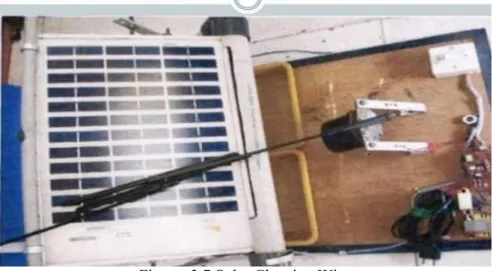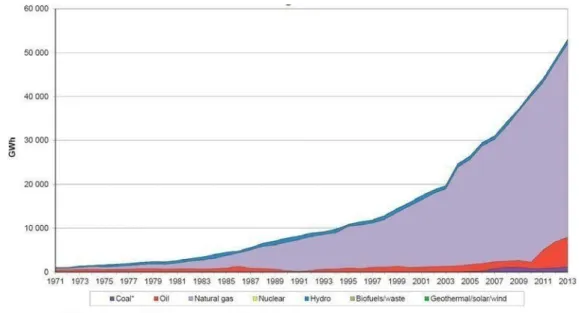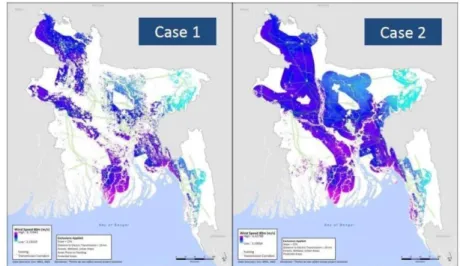This confirms that the project "HYBRID ELECTRICITY PRODUCTION SYSTEM USING WIND-SOLAR PHOTOVOLTAICS" Md. Abdul Malak (BME Md. The project was carried out in partial fulfillment of the requirements of the diploma of Bachelor of Science (B.Sc.) in mechanical engineering of the year 2019 and was confirmed in style and content. We declare that the work presented in this thesis is the result of research work , which we have done under the honorable teacher Prof. Lecturer, Department of Mechanical Engineering, Sonargaon University.
We also declare that no part of this thesis has been or will be submitted elsewhere for the award of any degree or diploma. First of all, we are grateful to Allah Almighty for giving us the courage and enthusiasm to complete the thesis. We are also grateful to all our thesis and SU project work team for their help in producing the project work and giving their valuable knowledge and time to complete the experiment.
Finally, we would like to thank all those who supported us in every aspect for the completion of the thesis. Renewable energy sources, i.e. energy generated from solar, wind, biomass, hydropower, geothermal and ocean resources are considered as a technological option for clean energy generation. But the energy generated by the sun and wind is much less than the production from fossil fuels, however, the production of electricity using PV cells and wind turbines has increased rapidly in recent years.
This article presents the solar-wind hybrid energy system that utilizes the renewable energies from sun and wind to generate electricity.
INTRODUCTION 09-10
Objectives 10
LITERATURE REVIEW 11-18
- Literature Review 10
- Hybrid Power System 11
- Implementation of Hybrid Energy System 12
- Solar Energy 13
- How PV Cells Generate Electricity 13
- Cell Layers 14
- Sun Activation 14
- Components of a PV Array 15
They are in most cases independent of the large centralized electrical grid and work together with more than one power source. The combination of the two sources of solar power and wind can provide better reliability and their hybrid system becomes more economical to operate as the weakness of one system can be supplemented by the strength of the other. Detailed descriptions of the different technologies, physics and basic principles of PV can be found in many textbooks and papers such as [4-7].
The solar output power can be mitigated by the distribution of solar energy in different geographical areas [12]. The highest achievable power extraction from a WT is 59% of the total theoretical wind power [15]. Due to the nature of hybrid solar PV and wind energy, optimization techniques can play a good role in using them efficiently.
At night, the presence of wind is an added advantage, which increases the reliability of the system. The characteristics of the sun are simplified as follows: mass 2× kg, radius 700,000 km, age 5× years, and an estimated 5 billion more years of life. Energy is the result of the high temperature of the sun and the large amounts of energy that are continuously emitted.
The solar cell is the basic building of the solar system and it produces about 1 W of power. A solar system may include any or all of the following: renewable energy credit meter, revenue meter, maximum power point tracker (MPPT), battery system and charger, GPS solar tracker, energy management software, solar concentrators, insolation sensors. This means that the frequency converter's rating determines the available AC watts available to the consumer.
Photon reflection losses are reduced to less than 5% with the anti-reflection coating. The travel distance of the photons was minimized by the contact grid so that they could reach the semiconductors. The heart of the photovoltaic system consists of p and n semiconductors in the form of two thin layers.
METHODOLOGY 16-31
- The Wind 19
- Wind Power 20
- Wind Power Generation 21
- Wind Speed Increases with Height 22
- Power Control of Wind Turbines 23
- Batteries 24
- Inverter 24
- Rectifier 25
- Solar Cleaning Wiper 25
- Solar Reflector 26
- DC Motor 27
- Charge Controllers 28
- Solar-Wind Power System 28
- Wind Power 29
- Wind Speed Distribution 31
- Energy Storage System 31
The production of energy from wind turbines depends on the speed of the wind acting on the turbine. The energy available for conversion depends mainly on the wind speed and the swept area of the turbine. The wind profile and wind speed at a specific location must be evaluated to identify which turbine is suitable for the particular site condition.
As the wind turbine itself can be as much as 70% of the total cost of the project, it is vital that it produces optimal electricity for the country. A German physicist Albert Betz concluded that no wind turbine can convert more than the kinetic energy of the wind into mechanical energy by turning a rotor. Wind energy systems convert the kinetic energy of the wind into other forms of energy, such as electricity.
This means that if wind speed doubles, the power available to the wind generator increases by a factor of 8. The fundamental equation governing the mechanical power uptake of the wind turbine rotor blades, which drives the electric generator, is given by equation. If wind speed is between the rated wind speed and the rolling speed of the wind turbine, the power output will be equal to the rated power of the turbine.
Power from practical turbine; the part of the energy extracted from the energy in the wind by a practical wind turbine is usually given the symbol 𝑝, which stands for the coefficient of performance. In stronger winds, it is necessary to dissipate some of the wind's excess energy to avoid damage to the wind turbine. The batteries in the system store the electricity generated from wind or solar energy.
Rectifiers are used to convert alternating current from the wind turbine into direct current, which is used for charging batteries and supplying direct current [4]. The blades of the wind turbine receive this kinetic energy, which is then converted into useful mechanical energy, which is then further converted into mechanical or electrical energy depending on the end use. Kinetic energy per second or the force that is in the air in motion is therefore 𝑃= 1 22 Substituting the mass flow rate in the equation for force in the wind, 𝑃𝑤𝑤𝑤𝑤= 1 23 As shown in the equation above, the force of the wind is proportional to the cube of the wind speed.
This means that if the wind speed is doubled, the force of the wind will be eightfold. The wind turbine with the larger rotor will generate more electricity than a turbine with a smaller rotor.
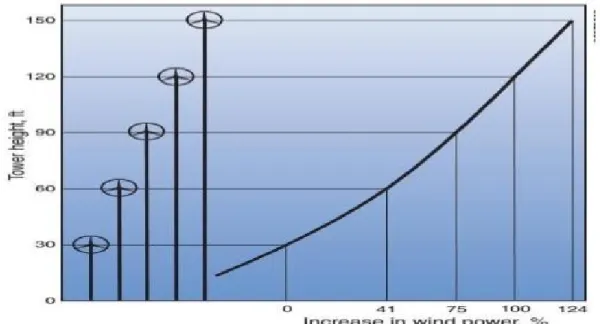
- Governmental policy on renewable energy and wind energy 32
- Renewable Energy Sources in Bangladesh 35
- Solar 36
- Wind Energy Potential of Bangladesh 36
- Wind resources 37
- Wind Power 38
Becoming increasingly aware of the necessity of renewable energy to reduce the amount of greenhouse gases, Bangladesh has set certain renewable energy targets. The GoB states in its Renewable Energy Program Growth Investment Plan (SREP) that Bangladesh can achieve over 6,000 GWh of generation from renewable technologies annually, of which 1,250 GWh can be generated from wind sources (SREDA, 2015). Installed renewable energy generation capacity is currently 437 MW, with the 230 MW Kaptai Hydro plant being the only renewable source connected to the grid.
GoB has set renewable energy development targets for various technologies for each year from 2015 to 2021, the "RE Development Targets". Investments in renewable energy sources are seen with increasing interest as an efficient means to energy independence and stimulate economic growth. To shed light on this association, this article discusses the relationship between renewable energy policy and renewable investment using a case study approach.
The purpose of this paper is to highlight the choices for investment in renewable energy, to shed new light on RE investment decisions, and how they are influenced by renewable energy policies. This paper proposes a conceptual framework and qualitative analysis to understand the structural factors influencing the investors' decisions as well as the relationship between renewable energy policies and investment in the case study countries of the United Kingdom, Turkey and Nigeria. The prospect of renewable energy in Bangladesh is very promising, especially in the case of solar energy.
However, in the near future, renewable energy will be linked to current energy genesis through non-renewable conventional means. However, renewable energy will play an important role in reaching consumers outside the national electricity grid or in places where connection to the electricity grid is delayed. The government has recognized the importance of renewable energy in our programmed energy planning and a draft renewable energy policy is about to be adopted.
In the context of Bangladesh, renewable energy mainly consists of biomass, solar energy and wind energy. The preliminary results of the measurement campaign are still under embargo with the Ministry of Energy. The BPDB has determined that wind energy can contribute up to 10% of the energy produced.
In 2015, an assessment of technologies for the production of electricity from renewable sources was carried out against the investment plan for the World Bank "Extending the Renewable Energy Program" (SREP). Although based on actual measurements, it is not an exact reproduction of the actual annual average wind.
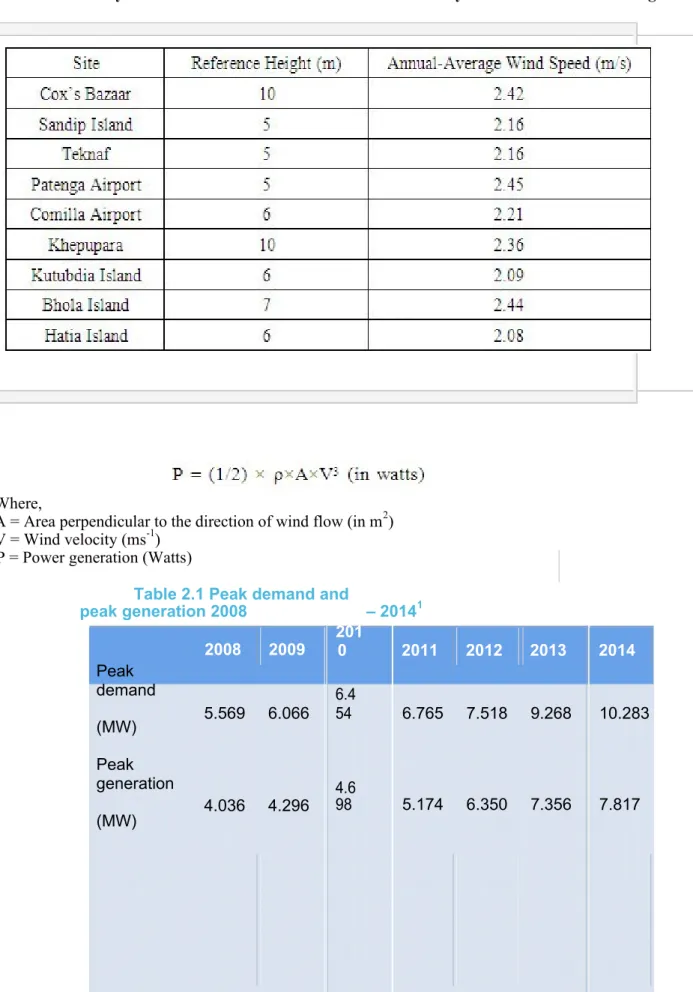
CONCLUSION 39-41
Disadvantage 39
Conclusions 40
